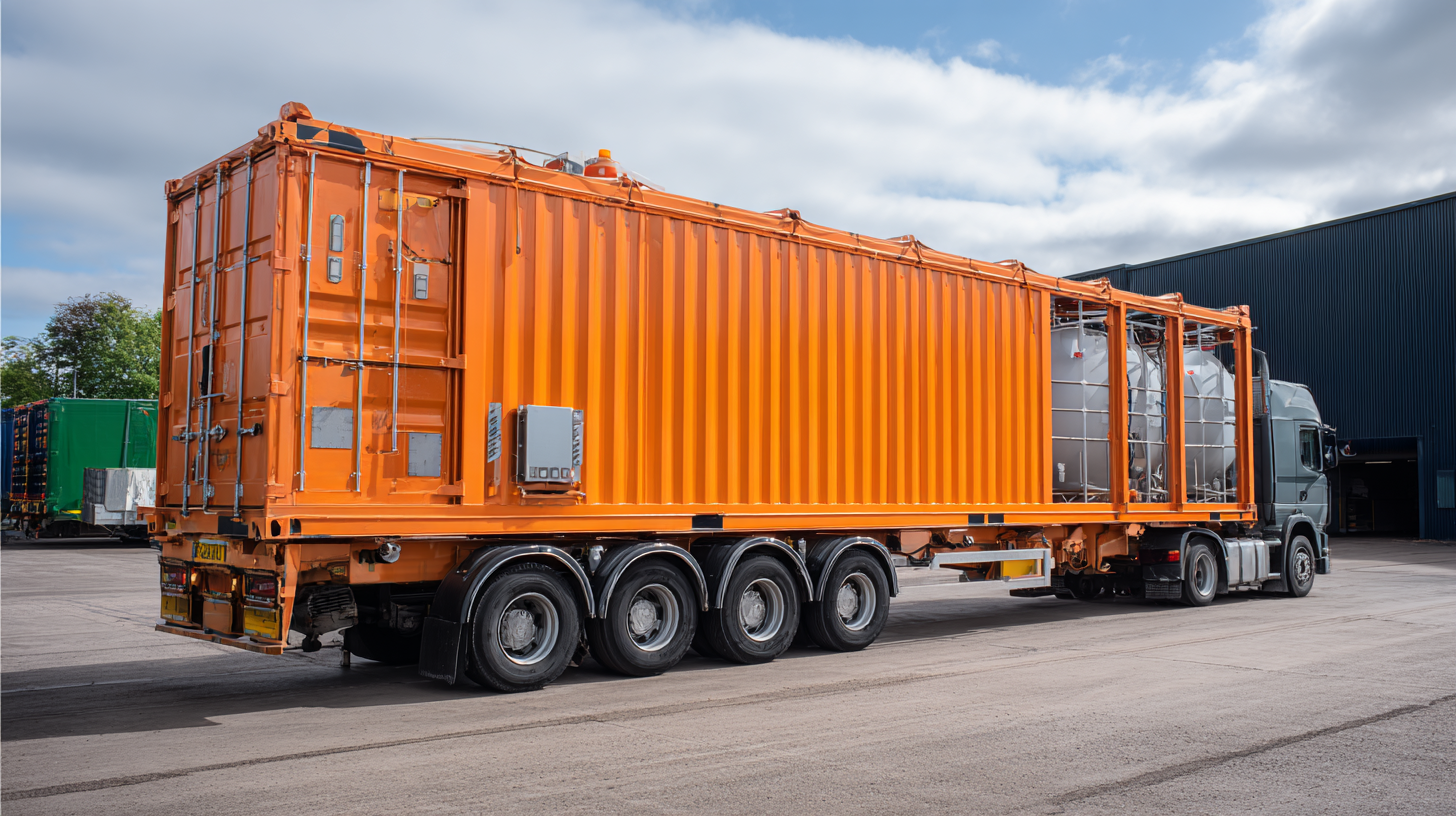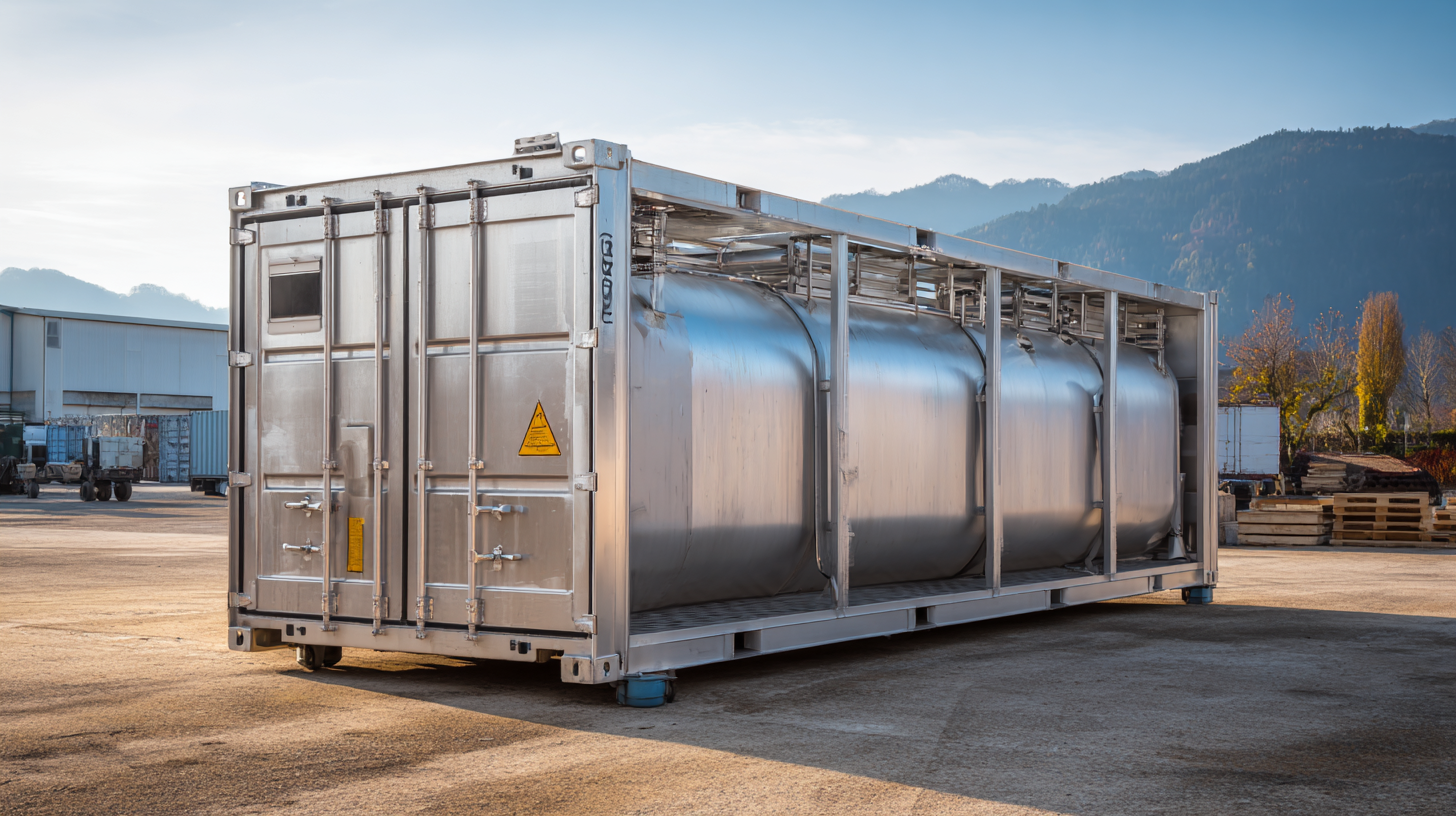- Home
- >
- Knowledge Center
- >
- Blogs
Blogs
Sharing knowledge is key to an innovative and healthy industry! This knowledge center is therefore a central place on our website to share information. Read all about our industry in the blogs below!
How to Choose the Right Tank Shipping Container for Your Business Needs
In the ever-evolving landscape of global trade, choosing the right Tank Shipping Container is paramount for businesses involved in the transport of liquids, chemicals, and other bulk goods. According to a recent report by the International Maritime Organization, the global shipping container market is projected to exceed $10 billion by 2025, with a significant demand increase for specialized containers like tank shipping containers. These units, designed to handle the unique challenges of liquid cargo, offer durability, safety, and compliance with rigorous industry regulations.

As businesses strive for efficiency and reliability in their supply chains, understanding how to select the appropriate tank shipping container becomes crucial to maintaining competitive advantage and ensuring product integrity during transit.
Factors to Consider When Selecting Tank Shipping Containers for Your Business
Choosing the right tank shipping container for your business involves careful consideration of several key factors. Firstly, the type of liquid you plan to transport is crucial, as different materials and designs cater to specific cargo requirements. According to industry reports, the global tank container market is projected to grow significantly, driven by the increasing demand in sectors such as chemicals and food and beverage. Understanding the compatibility between your cargo and container material, which is often made from stainless steel or aluminum, ensures safety and compliance with regulations.
Another important factor is the container's capacity and dimensions, which should align with your shipment volume and logistical needs. With an expected increase in mega ship operations, data indicates that the adoption of larger tank containers is on the rise. These larger tanks reduce transportation costs per unit but require accurate planning to match your supply chain capabilities. Furthermore, assessing the availability of effective transportation routes and infrastructure is essential, especially as the industry faces ongoing uncertainties and potential overcapacity issues in the coming years. This comprehensive evaluation will help ensure that the tank shipping container you choose is optimal for your specific business needs.
How to Choose the Right Tank Shipping Container for Your Business Needs
| Container Type | Capacity (liters) | Material | Common Uses | Temperature Control | Cost Range (USD) |
|---|---|---|---|---|---|
| Isotank | 20,000 - 26,000 | Stainless Steel | Liquid Foods, Chemicals | Yes | $2,000 - $5,000 |
| Flexitank | 16,000 - 24,000 | Flexible Material | Non-Hazardous Liquids | No | $500 - $1,500 |
| Tank Container | 25,000 - 30,000 | Carbon Steel | Hazardous Materials | Yes | $3,000 - $7,000 |
| IBC Tank | 1,000 - 1,500 | Polyethylene | Liquid Chemicals, Water | No | $150 - $500 |
| Tote Tank | 500 - 1,000 | Steel/Plastic | Food Products, Oils | Optional | $100 - $300 |
Understanding Different Types of Tank Containers and Their Applications
When selecting a tank shipping container, it's crucial to understand the various types available and their specific applications. Tank containers come in diverse forms, each designed to handle different types of cargo. For instance, ISO tank containers are ideal for transporting liquids like chemicals, food-grade products, and hazardous materials, ensuring safety and compliance with international maritime regulations. These containers are engineered to withstand extreme conditions while maintaining the integrity of the transported goods.
Additionally, specialized tank containers, such as those for cryogenic liquids or those equipped with heating or insulation capabilities, cater to unique industry needs. Understanding the distinctions among these container types allows businesses to make informed decisions that align with their shipping requirements and operational goals. Whether you are handling bulk liquids or temperature-sensitive products, choosing the right tank container can significantly enhance efficiency and reduce risks during transit.
Impact of Tank Shipping Container Size on Transportation Efficiency and Costs
When selecting a tank shipping container, size plays a pivotal role in determining transportation efficiency and costs. The dimensions of the container not only dictate how much cargo can be moved at once but also influence factors like loading speed and weight distribution. For businesses looking to optimize their supply chain, understanding the volumetric capacity that best suits their products is essential. For example, a larger tank might seem advantageous for bulk shipments, but it can lead to increased shipping costs and potential regulatory issues if not managed properly.
Moreover, the transportation mode will also affect how container size impacts costs. If a company primarily uses road transport, larger containers may incur higher tolls and fuel consumption. Conversely, for rail or sea transport, larger containers can be more efficient, allowing for more cargo to be moved at once, thereby potentially lowering per-unit shipping costs. Determining the right balance between size and efficiency is vital for businesses to maintain profitability while meeting their logistical needs. Understanding these factors can significantly contribute to making informed decisions regarding tank shipping containers.
Impact of Tank Shipping Container Size on Transportation Efficiency and Costs
Regulatory Compliance: Ensuring Your Tank Container Meets Industry Standards
When selecting a tank shipping container, regulatory compliance is paramount. Different industries have specific standards that must be adhered to, ranging from the Transport of Dangerous Goods regulations to the International Maritime Organization guidelines. According to the 2022 Logistics and Transportation Market Report, about 75% of companies faced fines due to non-compliance, highlighting the importance of ensuring your tank container meets all necessary standards.
To begin, it's vital to identify the regulatory requirements that pertain to your cargo. For instance, the Chemical Accidents (Emergency Planning) Regulations may apply if you’re transporting hazardous materials. Ensure that your tank container is certified for the type of substance you’re shipping, as improper classification can lead to severe penalties and safety hazards.
Tip: Always verify the certification of the tank container with the supplier before finalizing your purchase. Another essential aspect is to keep abreast of changes in industry regulations. Subscribe to updates from relevant regulatory bodies, which can help ensure your business remains compliant and informed about any adjustments that could impact your operations.

Cost Analysis: Comparing Tank Container Purchase vs. Leasing for Business Needs
When considering the right tank shipping container for your business needs, one critical aspect is the financial comparison between purchasing and leasing options. With the recent trends in the shipping industry, particularly regarding LNG tank containers, businesses must evaluate the long-term implications of their choices. Purchasing a tank container involves upfront costs, but it may provide more flexibility and usage efficiency in the long run, especially as the demand for LNG transportation grows. On the other hand, leasing can help mitigate initial investments and ensure that businesses can adapt to fluctuating market conditions without committing to a permanent purchase.

Recent industry reports indicate a shift in the tank container sector, with developments increasingly moving towards Asia. This geographical transition highlights the importance of understanding regional market dynamics and cost structures. By thoroughly analyzing the costs associated with purchasing versus leasing, and considering factors like the increasing popularity of LNG tank containers, businesses can position themselves to take advantage of emerging opportunities in the global shipping landscape.
